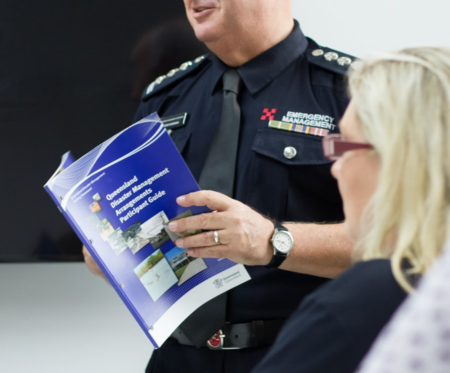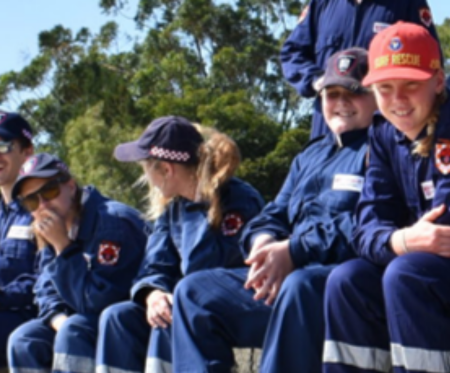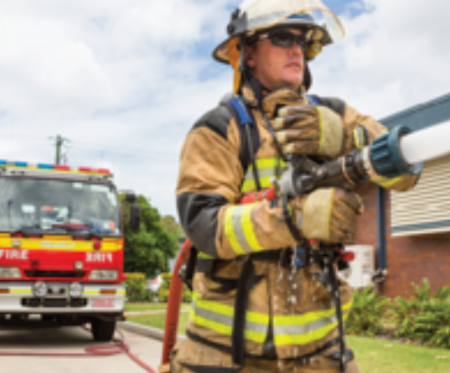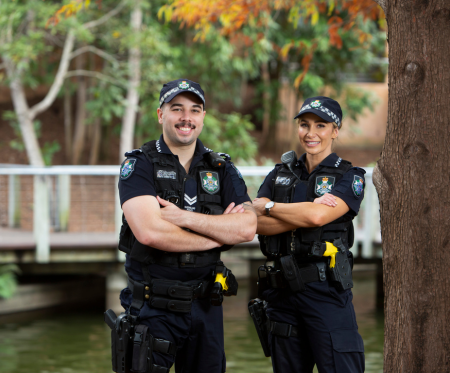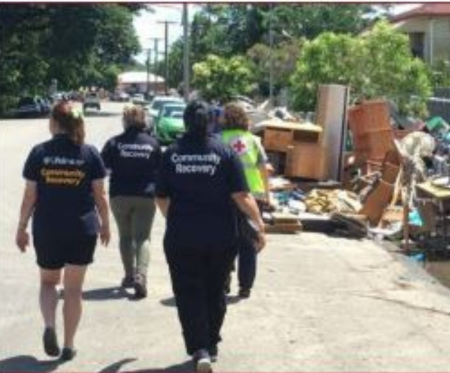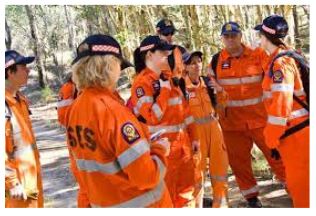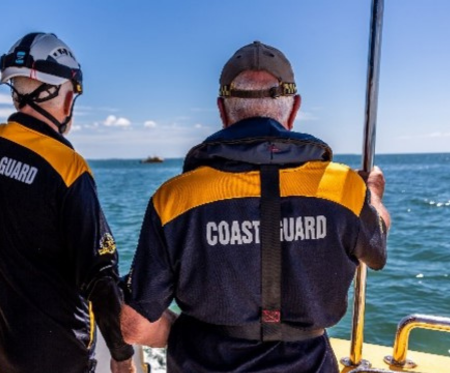
Disaster and Emergency Services Reform
The Queensland Government has made significant changes to Queensland's disaster and emergency management system, ensuring we are best placed to continue delivering exceptional services to all Queenslanders.
In July 2021, the Queensland Government commissioned an independent review of QFES and its associated volunteer services. The goal of the review was to ensure the long-term sustainability of emergency services delivery for Queenslanders. This included assessing the existing scope, functions and suitability of the QFES structure and its funding arrangements.
Multiple recommendations made by the review were accepted in principle by the Government to address function and structure, culture, efficiency and funding and sustainability with a goal to:
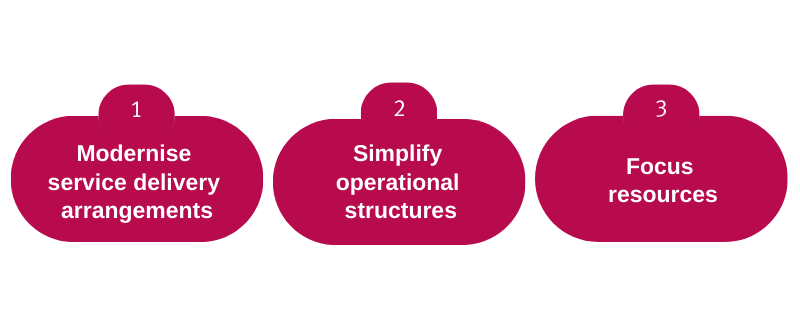
The reforms saw an uplift of almost 500 full-time emergency services personnel. This boost to resourcing across Queensland, has ensured that we can continue to support Queenslanders when they need it most. Through these reforms we have:
- Established a new Queensland Fire Department
- Established a new entity, Marine Rescue Queensland, which will bring together coast guard and marine rescue activities.
- Expanded the Queensland Police Service to incorporate additional disaster management functions, including the State Emergency Service and Marine Rescue Queensland. These organisations will continue to maintain their respected identities, procedures and uniforms.
- Boosted capability and capacity for the Queensland Reconstruction Authority to improve resilience.
Disaster Management
As disasters evolve, so too should the way we prepare, prevent, respond to, and recover from them.
With Queensland experiencing more natural disasters than any other state in the country, the Disaster Management Arrangements in our state have become extremely robust through activation, exercise and lessons management.
As a part of the reforms, the Queensland Police Service will gain primary responsibility for functions of Disaster Management and will be integrated, so we can continue to deliver world-class emergency and disaster management support to all Queenslanders.
As part of the changes, Disaster Management will see an increase of 80 positions and up to $20 million in recurrent funding to support disaster response and coordination.
Disaster Management in Queensland is a shared responsibility requiring all agencies, partners and stakeholders collaboratively undertake and manage disaster management activities as legislated by the Disaster Management Act 2003 and Disaster Management Regulation 2014.
For further information, visit Disaster Management.
Marine Rescue Queensland
Bringing together Australian Volunteer Coast Guard and Volunteer Marine Rescue, Marine Rescue Queensland (MRQ) will be established as a single entity dedicated to protecting Queenslanders in our oceans and waterways.
Through these two organisations, 3,000 Queensland volunteers currently undertake approximately 4,000 activations operating across 47 units throughout the state each year.
MRQ will benefit from the extraordinary wealth of expertise and diverse geographic knowledge of our existing marine rescue volunteers, uplifting capability and capacity across the state.
In 2020, the Queensland Government announced its commitment to the establishment of a fully integrated and legislated state-wide marine rescue service.
Blue Water Review – the genesis of Marine Rescue Queensland
The Queensland Government’s announcement followed the Blue Water Review’s (the Report) released in January 2019 following significant stakeholder and sector consultation. The Report identified key issues impacting volunteer marine rescue service delivery, including service sustainability and capability. The Report recommended a single integrated marine rescue service in Queensland.
In 2019, the QFES Commissioner initiated the Blue Water Review Working Group who reviewed the Report’s observations and a series of recommendations, which included a Concept of Operations.
The Queensland Government committed an initial $35.38 million investment for replacement vessels and transition support to establish the single integrated marine rescue service in 2020. Further investment of $8 million was announced in 2022 with $5 million for vessel replacement and $3 million for service capability.
Independent Review of QFES − validates single statewide Marine Rescue Service
Sitting within the Queensland Police Service (QPS) and building on the great relationship with Water Police, MRQ will receive approximately $27 million for frontline support, resources, vessels and equipment and will have its own separate identity, procedures and uniforms.
Benefitting Community, Volunteers and State
Community:
- One single integrated marine rescue service - Marine Rescue Queensland keeping Queenslanders and visitors to our state safe on the water.
- Current marine rescue services maintained and continued through implementation and transition.
Volunteers:
- Improved support at local and regional levels.
- Improved volunteer protections including access to health and safety programs.
- Improved access to replacement vessels.
- Improved volunteer recognition.
For Queensland:
- One single integrated marine rescue service and safety network.
- Better resourced service and volunteers able to respond, education and contribute to their community.
Stay up to date on Marine Rescue Queensland
- Read
- the latest Marine Rescue Implementation Program updates.
- Subscribe for the latest updates about Marine Rescue Queensland Implementation via marinerescue@police.qld.gov.au
- Join the Queensland Marine Rescue Volunteers Facebook Group for Queensland marine rescue volunteers.
For more information, email marinerescue@police.qld.gov.au.
PCYC Emergency Services Cadets
The PCYC Emergency Services Cadets program will be integrated within the Queensland Police Service to better align emergency volunteer activities across Queensland.
For more information, visit PCYC Emergency Services Cadets.
Queensland Fire Department
With a clear focus on fire prevention, response and control, a new Queensland Fire Department (QFD) will be established.
The QFD will encompass the Queensland Fire and Rescue (QFR) and Rural Fire Service Queensland (RFSQ) and will continue to deliver world-class fire and rescue services.
The reforms will see an extra 114 full time equivalent (FTE) positions for the RFSQ and 143 firefighter positions for the QFR, as well as additional funding for new appliances, facilities and equipment.
For more information, visit Queensland Fire Department.
Queensland Police Service
The Queensland Police Service (QPS) will be expanded to include disaster management functions, the soon-to-be-established Marine Rescue Queensland (MRQ), and the State Emergency Service (SES) to provide an all-hazards approach to disaster management.
The Queensland Government has committed annual funding of approximately $20 million dedicated to disaster management functions.
MRQ and the SES will maintain their own identity, uniforms and procedures within the QPS.
The changes depend on the recommendations from the Inspector-General for Emergency Management’s Review into Queensland’s Disaster Management Arrangements.
For more information on the QPS, visit the Queensland Police Service.
Queensland Reconstruction Authority
The reforms will uplift capability and capacity for the Queensland Reconstruction Authority (QRA) to improve resilience across our state. To support disaster preparedness programs and initiatives, the QRA will receive additional funding and 30 extra full-time equivalent (FTE) positions.
For more information visit QRA.
State Emergency Service
The State Emergency Service (SES) has a long-standing and proud history of commitment and service to community safety, especially during times of crisis.
The Queensland Government has committed to an operational budget of $60 million for the SES from the 2023/24 financial year, including funding for personnel, crucial safety equipment, vehicles and vessels to focus on supporting the frontline. An additional 45 operational staff will also focus on regional support as part of the SES Uplift Program. The changes will address any identified needs and deliver a strong and sustainable SES into the future.
The SES will remain a shared responsibility between the State Government and local councils. This partnership is highly effective in protecting and supporting communities during natural disasters and emergencies.
As part of the reforms, the SES will maintain its own separate identity, branding and uniforms, under the Queensland Police Service.
For more information visit the State Emergency Service.
Surf Life Saving Queensland
Surf Life Saving Queensland (SLSQ) will continue to keep Queenslanders safe in our oceans, waterways and lagoons. As part of the reforms, the SLSQ will maintain their own identity, uniforms and procedures within the QPS.
For more information visit Surf Life Saving Queensland.



